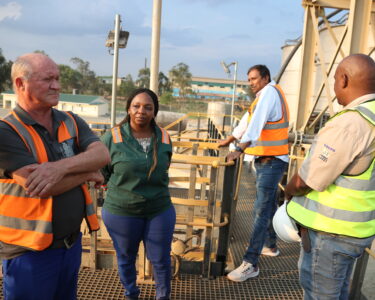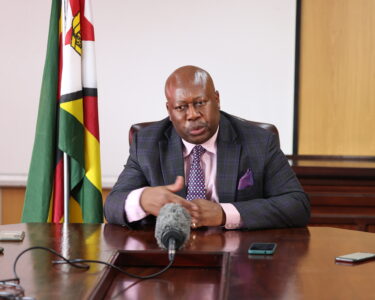With the hive of activity in the mining sector, questions have been raised whether government and the mining industry are pulling in the same direction as the country marches towards Vision 2030.
In this interview with our Editor-in-Chief, Munyaradzi Huni, the chief executive officer at the Chamber of Mines of Zimbabwe, Isaac Kwesu, explains that the Chamber supports most of the measures taken by government to ensure that the country benefits from its minerals. Read on . . .
Question: From your perspective as the Chamber of Mines of Zimbabwe, how would you describe the country’s mining sector regarding its performance over the past year?
Answer: The performance of the mining sector in 2022 was generally encouraging with preliminary production statistics showing that most key minerals recorded output increases in 2022, compared to 2021. Lithium (64%), gold (21%), coal (21%) and diamonds (25%) are estimated to have recorded notable output growth rates for the comparable periods.
The strong performance was largely supported by ongoing expansion projects, resuscitation of closed mines and new projects across some of the key mineral subsectors. This performance was weighed down by electricity supply interruptions which worsened in the fourth quarter of 2022 and inadequate foreign exchange allocations. In the absence of these constraints, the mining industry could have performed significantly better.
Q: Several companies — both local and international — have poured investments into the country’s mining sector over the past few months. To what do you attribute this sudden interest in Zimbabwe as an investment destination? Has the investment climate changed over the past few years to attract so many investors?
A: Government, with the support of the private sector, has been engaged in a concerted investment attraction drive for a number of years. It is our view that the investments being realised in the recent past are a direct outcome of that drive.
Despite the challenges facing the mining industry and the economy, investors — we believe — take a long-term view and are positioning themselves for future improvements in the operating environment.
In addition, government has been consistent in its messaging on investment protection and attraction. This has lowered country risk resulting in the improvement of perception on investing in Zimbabwe.
Q: How much money in terms of investment has been poured into the mining sector over the past year? How many new mines opened and old mines rehabilitated?
A: The exact levels of capital invested in the mining industry is yet to be fully quantified. We believe that there is an increase in investment based on the projects that are operating and expansion projects.
This information on the level of investment will be made public as soon as it is available.
Q: How much over the past five years has the mining sector been contributing to the country’s annual export earnings?
A: Mineral export earnings almost doubled from US$2.7 billion in 2017 (65% of total national exports), to US$5.2 billion in 2021 (82% of national exports).

Q: Which mineral contributed the biggest chunk to the country’s export earnings and why do you think this mineral contributed so much more? Can you list the top five minerals in terms of their earnings?
A: The PGMs subsector at 41% accounted for the highest contribution to mineral exports over the past five years, followed by gold (34%), ferrochrome (8%), diamonds (4%) and nickel (1%).
Q: How many minerals are there in Zimbabwe? Those being exploited and those not yet being exploited? For those that we are not yet exploiting, what are the challenges the country is facing in exploiting them?
A: It is estimated that the country is endowed with more than 60 different minerals, with approximately 40 having been commercially mined before. For those that are yet to be extracted, there is need for increased investment in mineral exploration targeting these minerals to fully understand their potential and prospects for commercial production.
Q: The government has come up with measures to direct mining companies to beneficiate their exports. Are the mining companies complying? Can you give tangible examples?
A: The mining sector, for a long time, has been supportive of beneficiation of mineral resources. High-value mineral products guarantee increased returns for the investors and government. Beneficiation continues to be undertaken for some minerals, among them ferrochrome, phosphate to fertilisers (Dorowa), coal to electricity and coke for export, gold to jewellery through Aurex and other jewellers.
We have also witnessed significant investments in beneficiation facilities in the PGMs sector with Zimplats investing in smelters and refurbishing its Base Metal Refinery, while Unki Mines invested in a smelter. There are also a number on processing facilities being constructed in the lithium sub-sector (Sabi Star Lithium Mine and the Mines to Energy Park), iron and steel (Dinson Mine) and several in the ferrochrome sub-sector.
The history of Zimbabwe is littered with successful investment in beneficiation such as Mhangura copper smelter, Bindura smelter and refinery, Empress nickel refinery and Kamativi for tin, among others.
Q: From October 2022, government gazetted a Statutory Instrument that directs companies extracting selected minerals to pay 50% of their royalties in cash and the other 50% in processed minerals. Was this a good move and are the mining companies complying?
A: It is our understanding that government would want to build mineral stocks by collecting part of royalties for the selected minerals in the actual commodity. We understand that this policy is intended to strengthen the country’s fiscal and monetary positions.
As an industry, we have no objection to the new policy thrust. We support this policy position on the basis that there is no negative outcome for the mining industry. The same amount of royalties will continue to be paid albeit [part of it will be] in physical form.
Q: Government has also banned the export of lithium ore. As Chamber of Mines do you support this move and how do you see it benefiting the country?
A: The Chamber notes the new government policy thrust in the lithium sector which is consistent with the need to ensure local beneficiation of minerals. We further note and appreciate that government has provided flexibility in terms of implementation of the policy. It has provided for producers and interested persons to apply for permits to export base minerals. Such applications will be supported by justifications for such exports. We believe reasonable justifications will receive a favourable response from the authorities.
Q: The mining sector has been accused of not expanding in terms of employment creation. How many jobs have been created in the sector over the past five years?
A: Employment in the formal mining sector (NEC Mining-registered employees) has increased from 37,000 in 2017, to around 44,000 in 2022. For every job created in the mining industry we believe that three to five jobs are created in other sectors that support mining as well as to service other sectors of the economy.
Q: There are allegations that mining companies are plundering resources and not giving back to their surrounding communities. What is your comment?
A: Most mining companies who are members of the Chamber of Mines are undertaking various initiatives and projects to support communities through their corporate social investment (CSI) budgets. It is estimated that over 5% of the cost of production is dedicated to CSI initiatives. These initiatives cover education, health, agriculture, sports, infrastructure development, and local enterprise development initiatives, among others.
The allegations may be based on the gap between the current state of development and the aspirations of communities which will be bridged over time as the economy grows.
Q: The Ministry of Mines and Mining Development came up with a US$12 billion target by 2023. Do you think this is achievable since we are already in 2023?
A: The mining industry is working closely with the Ministry of Mines to ensure that all projects that were earmarked in the US$12 billion milestone materialise.
While considerable progress has been achieved, the progress has been impacted by the Covid-19 pandemic and a deteriorating electricity supply situation which were not anticipated when the roadmap was conceived.
Q: What are some of the challenges that are hindering the growth of the country’s mining sector? And what do you think the government should do to assist in overcoming these challenges?
A: Key challenges that continue to undermine the performance of the mining sector include inadequate electricity supply, foreign currency shortfalls, high cost structure (high electricity costs) and capital shortages.
The Chamber of Mines has over the years engaged government on specific solutions that are being considered. We believe that while these matters are under discussion it will constitute negotiating in bad faith to discuss these matters in the public domain.
We are grateful of the audience that we have received in submitting our proposals and we are confident that they will be considered fully.





